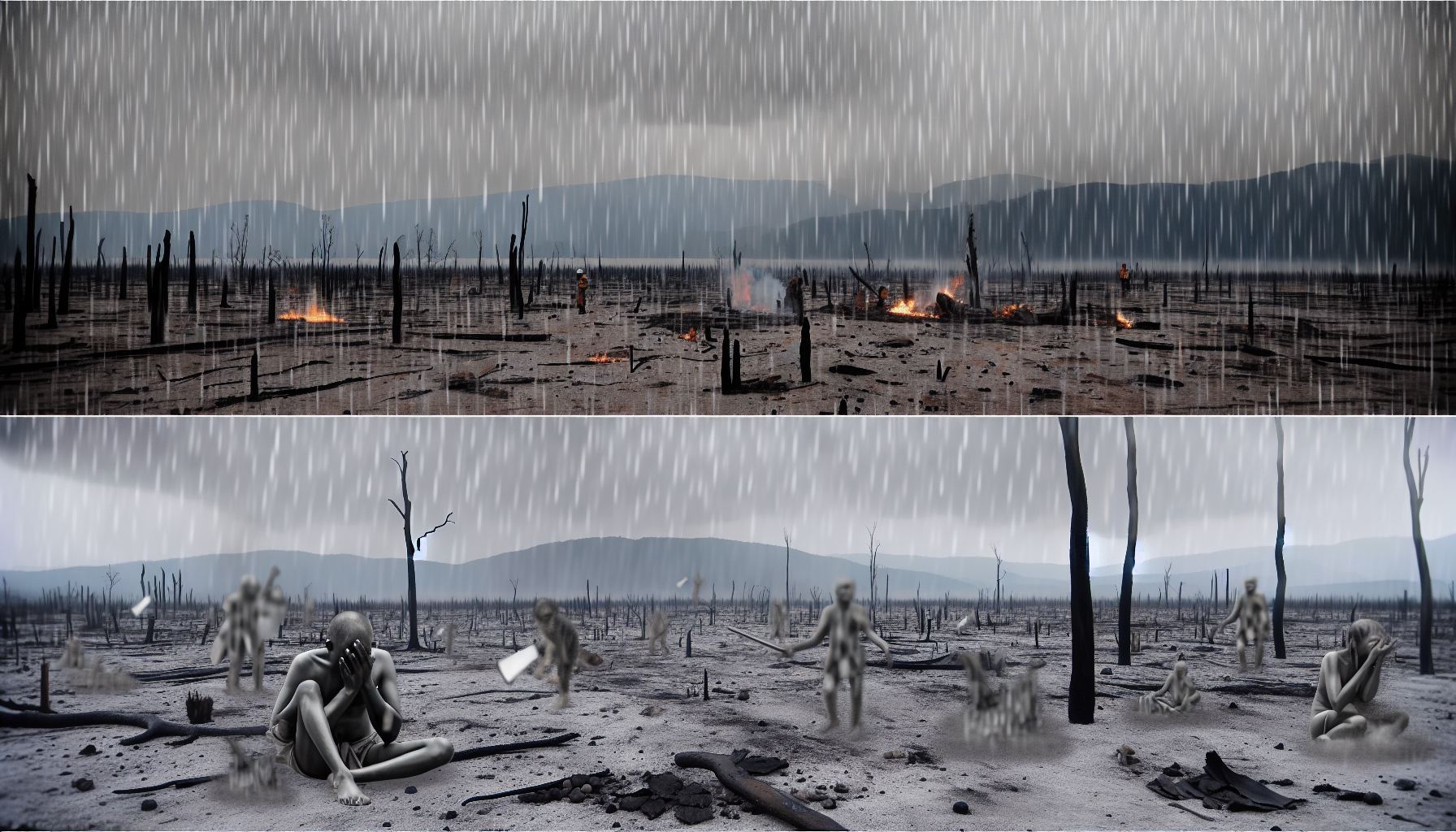As the sun rises, painting the sky in hues of searing orange, an eerie silence pervades the air, thick with the scent of charred remnants. The once lush canopy that adorned our planet’s tropical forests is now a distant memory, a verdant past overshadowed by pillars of smoke and the relentless descent of ashen rain. In this stark reality, we explore the aftermath of the latest calamity — a forest fire of such magnitude that it might very well have been the last. Our existence, once nestled in the abundance of these forests, is now at the mercy of their downfall.
The ashes that fall like sinister snowflakes tell a tale of loss, narrating the chronicles of combustion that have razed biodiversity to the ground. It is a world where the charred soil has become a canvas for sorrow, and the rain, a diluted paintbrush rendering scenes of despair. As the forest’s lifeblood sizzles out, locals whisper of clouds pregnant with soot, birthing drops of grimy precipitation that stain the soul of civilization.
Firefighters, those valiant warriors against nature’s fiery wrath, recount the flame-fronts that danced devilishly fast, outpacing even the most determined efforts. They speak of desolation so profound that the fabric of ecosystems unraveled before their very eyes, leaving behind a barren wasteland, devoid of the symphony of wildlife that once thrived within these woods.
The impact on local communities is both tangible and heart-wrenching. Villages that subsisted on the forest’s bounty now gaze upon a desolate panorama. Fields that bore fruit now bear the scars of scorching. The once clear air, thick with the hum of life, now carries a deathly silence, punctuated only by the occasional cough of a survivor, expelling the remnants of ashen air from their lungs.
No narrative on the embers of the last forest fire would be complete without acknowledging the indomitable spirit of the indigenous populations. In a poignant contrast to the landscape that surrounds them, their resolve remains unyielding, despite facing an existential threat that has razed their homes and history. Clad in the ashes of their ancestors’ dreams, they dare to resist, to stand as human monoliths against the storm of blackened rain.
Yet, in the face of this overwhelming despair, there is no rallying cry for salvation. For what is there to save when the apocalypse descends in slow motion? The ashen rain is not simply a byproduct of environmental catastrophe; it is a bitter reminder of our complicity in this unfolding dystopia. As the effects of climate change fan the flames of destruction, it begs the question of whether this is the future we have resigned ourselves to, an inheritance of ash for generations to come.
In this world, where the sky weeps soot, one must wonder if there is solace to be found. The ecosystems that took millennia to form — ravaged in days, their legacy now suffocates under the sheer weight of the ashen deluge. It is a sobering realization that nature’s resilience has its limits, a threshold we have shamelessly breached. The forests we took for granted, the lungs of our Earth, no longer breathe life; they gasp, weak and asphyxiated.
From the unrelenting barrage of environmental disasters, a perversely exquisite beauty emerges. Amidst the chaos, there exists a haunting allure in the ashen rain, a testament to the awe-inspiring power of nature — even in its death throes. It paints a portrait of what was and what could have been, a stirring eulogy to the majesty of our dying planet.
As the sun sets, now muted and dull behind a veil of smoke, the world is left to ponder. Will the ashen rain ever cease to be the ‘new normal’? Is there a path to redemption, or have we etched our fate in stone, signed with the ink of our environmental hubris? We tread on what remains of our forests, leaving footprints in the ashes, a haunting echo of our once verdant and lively dominion over nature, now reduced to cinder and smoke.
